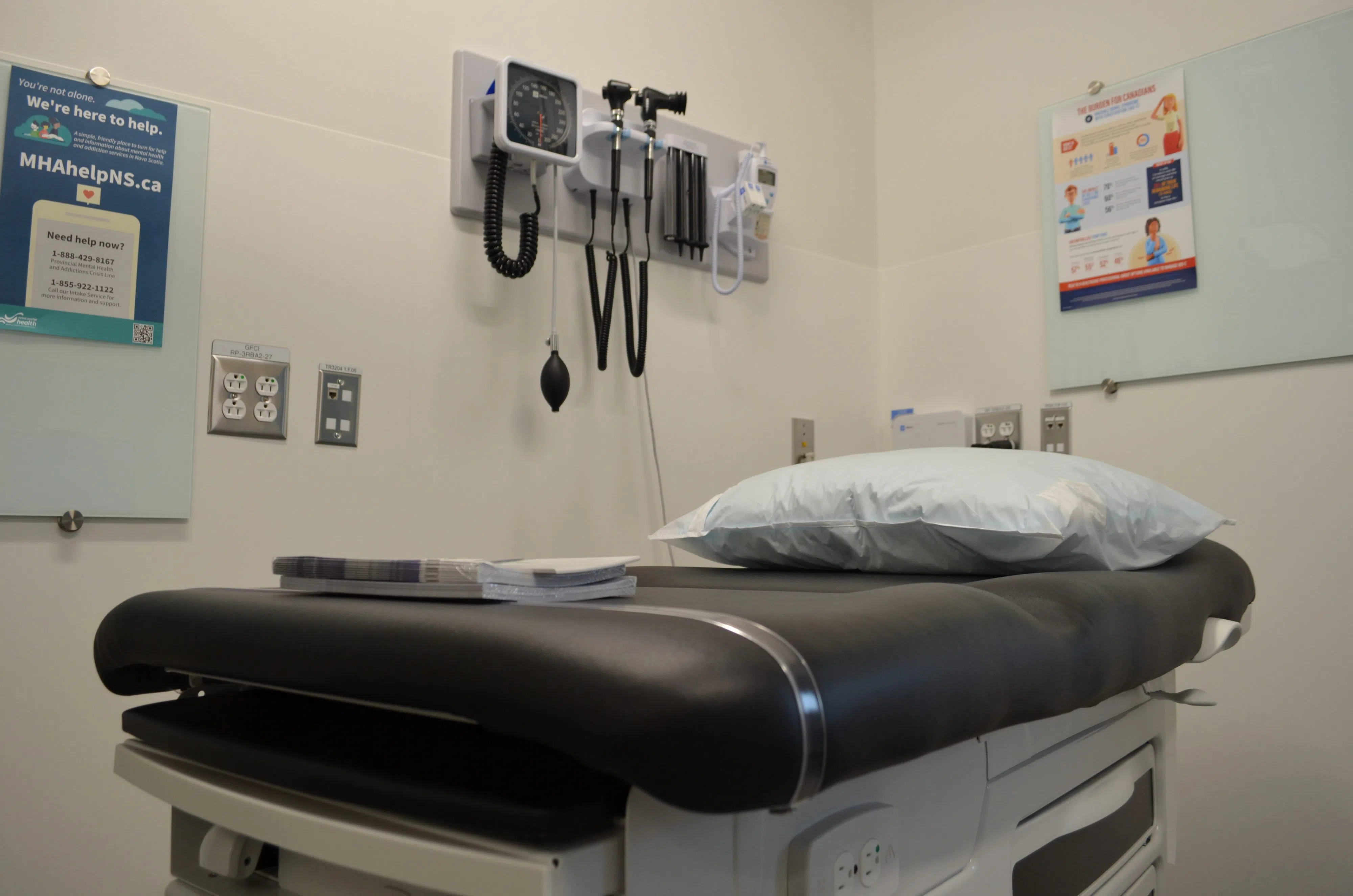Nova Scotia Health showed off some recent improvements to health-care facilities in Halifax on Thursday.
Members of the media toured the QEII hospital, the innovation hub, a mobile health van and the Bayers Lake Community Outpatient Centre.
Chris Lightfoot, a radiologist, told reporters that recent changes at the QEII hospital get patients in and out of their procedures faster.
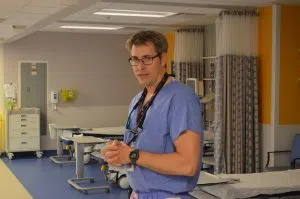
Radiologist Chris Lightfoot stands in one of the recently renovated areas of the QEII hospital on Aug. 1, 2024. (Jacob Moore/Acadia Broadcasting)
The newly renovated area streamlined the process for getting patients in and out of their interventional radiology procedures.
Those procedures are minimally invasive, said Lightfoot. Doctors use the imaging technology, like x-ray, CT scans and ultrasounds, to see and do things inside the body without having to open up certain areas in more invasive ways. Some of those procedures can take 15 minutes and some can last for several hours, he said.
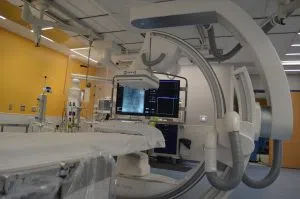
A machine used for imaging in the radiology department of the QEII hospital, pictured on Aug. 1, 2024. (Jacob Moore/Acadia Broadcasting)
The renovation has made a huge difference, he said.
“Our efficiency went up over 20 per cent. We treat about 8000 people a year now here and a few years ago it was around [6000],” said Lightfoot.
Before the change, Lightfoot said the process to get patients to the area was more complicated, requiring multiple steps and multiple porters, people who transport patients.
Some other improvements to radiology include the treatment of stroke victims.
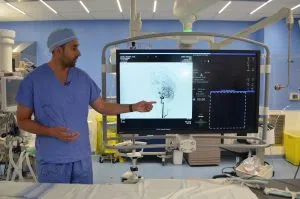
David Volders points at a brain scan, highlighting a blood clot that could cause an aneurysm. The image was taken using radiology tech. (Jacob Moore/Acadia Broadcasting)
David Volders, a neuroradiologist, explained that some stroke treatments have evolved from 2016 that help more and more people recover each year, he said.
He said they also can perform surgeries on people within 10 minutes of them having stroke, if they get the patient in the room fast enough, but most of that comes down to people and family around the victim recognizing the symptoms.
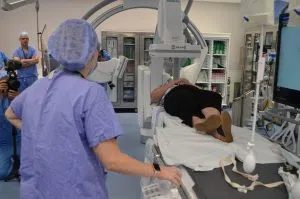
Two people demonstrate how a radiology imaging machine scans someone’s brain on Aug. 1, 2024. (Jacob Moore/Acadia Broadcasting)
The tour took reporters to a mobile health van as well. These are often used in communities with little access to health care. They sometimes provide vaccines and things like COVID-19 test kits.
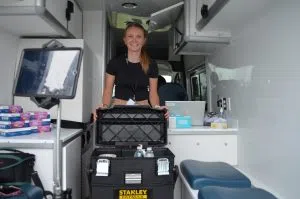
A worker poses with supplies in a mobile health van on Aug. 1, 2024. (Jacob Moore/Acadia Broadcasting)
The tour also showed off the new Bayers Lake Community Outpatient Centre, which provides primary care for people without family doctors.
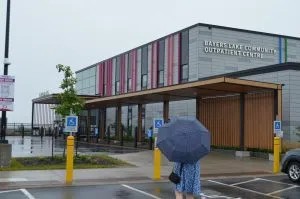
The Bayers Lake Community Outpatient Centre, which only opened a few months ago, is pictured on Aug. 1, 2024. (Jacob Moore/Acadia Broadcasting)
Health Minister Michelle Thompson said she wanted to give the tour to show off the health-care system, but also because her government campaigned to fix health care.
“We ran on the platform to fix health care. Number two, we have made generational historical investments in health care. And there are a number of things that are changing. The way we received and delivered health care in the past is not the way of the future. We need to have different ways of doing things,” said Thompson.
She said she would be the first person to say the government needs to do more for health care. But she would also say she has time left to make those improvements before the next provincial election.

Minister of Health Michelle Thompson tests bone imaging tech under development at the Nova Scotia Health Innovation Hub on Aug. 1, 2024. (Jacob Moore/Acadia Broadcasting)
Several unions representing health-care workers other than doctors and nurses are in the negotiation process for a new collective agreement.
When asked if a significant raise in wages would help with staffing shortages in health care, Thompson said those conversations are best had at the bargaining table.



